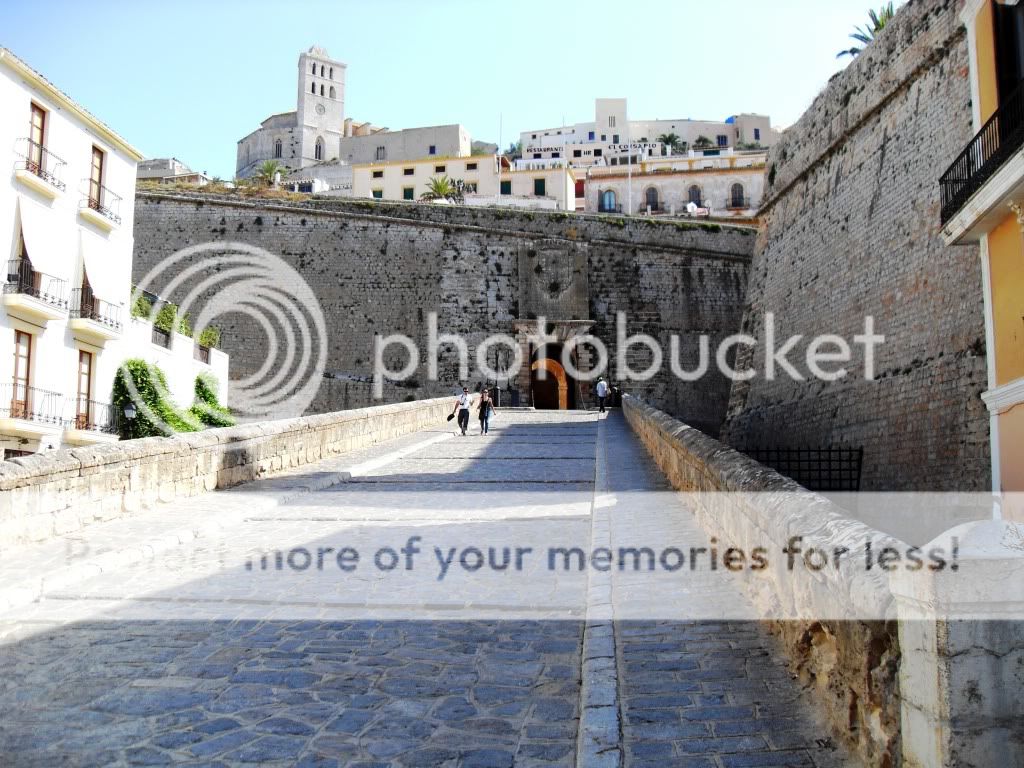As part of the Balearic Islands, both Catalan and Spanish are spoken in Ibiza. In fact, the official name of the island is Eivissa. As a world premiere tourist destination and a significant ex-patriot community, most inhabitants speak also use English, German, and / or French.
Dalt Villa, Eivissa, España
Click photo to enlarge.
This is the entrance to Dalt Villa (Catalan for 'Upper Town') which is the oldest part of Ibiza Town. Once the island was reconquered from the Moors by King James I of Aragon, the fortress was outfitted and a wall encircling the whole city was constructed and completed in the thirteen century. The steeple of Santa Maria d'Eivissa can be seen in the upper left, the pinnacle of Dalt Villa constructed in the fourteen century. I found it delightful to walk out of the drawbridge every morning to sit at a café and drink in the shade. After a long night out, it felt save to sleep in a town that had its own fortress walls.
(Ibiza is located in the Mediterranian Sea, off the eastern coast of Spain. Here's a map. Ibiza is the westernmost island.)

Cool. The pic reminds me of Cagliari in Sardegna... Gotta love city walls.
ReplyDeleteI want to go to spain one day
ReplyDelete